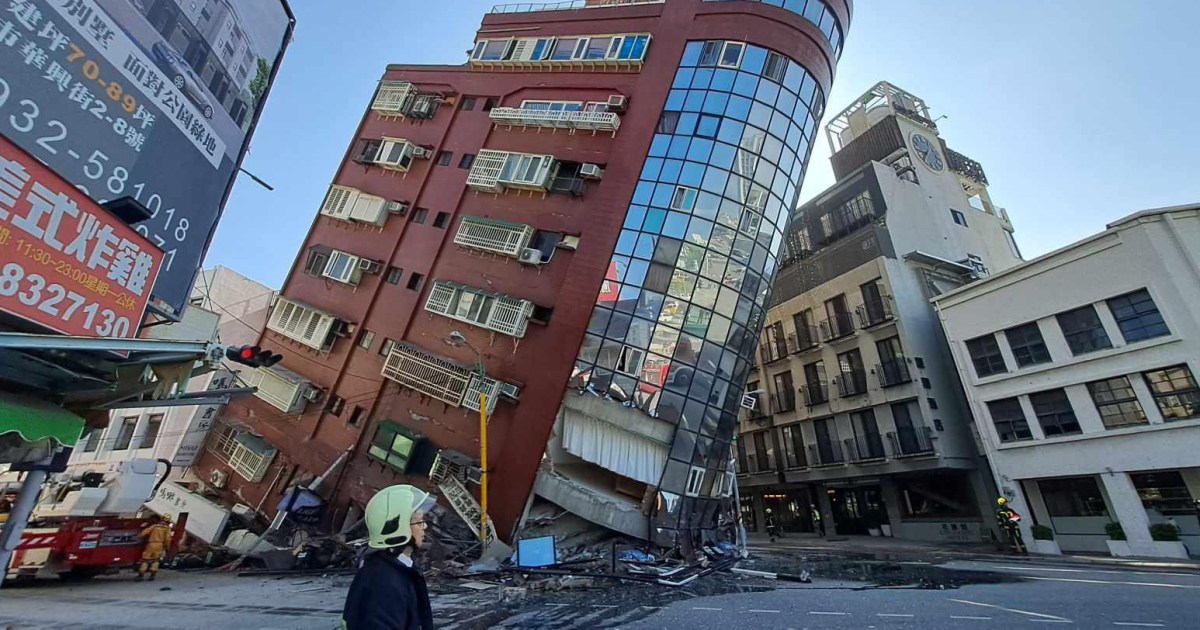Following a devastating earthquake in 1999, Taiwan upgraded its seismic infrastructure. Experts said it offers lessons for the U.S. West Coast.
The powerful earthquake in Taiwan on Wednesday shook an island that was well prepared for a seismic catastrophe — likely more so than some regions of the U.S., several experts said.
Nine people have been reported dead, though Taiwanese officials said the death toll could rise in the coming days. More than 1,000 were injured and at least 100 were feared trapped. But given the size of the quake — magnitude 7.4 — seismology experts said it appeared the dense island had fared as well as could be expected in initial reports.
That’s no fluke: Taiwan uses a robust early-warning system and has modern seismic building codes, experts said, and its population is accustomed to frequent seismic activity. Following the devastating 1999 Chi-Chi earthquake, the island significantly upgraded much of its infrastructure.
“Two thousand four hundred people died. And this time, we only have nine people reported dead. You see the progress,” said Larry Syu-Heng Lai, a geologist and postdoctoral researcher at the University of Washington who grew up and studied in Taiwan. “Our buildings are stronger. Our facilities are better. You can say we take it seriously — but it’s part of life every day.”
Experts said U.S. cities in earthquake-prone areas along the West Coast are making varying levels of progress to prepare for temblors. But none measure up to Taiwan’s capital.
To be perfectly blunt… “parts of the US” is a cop out.
Most parts of the US are extremely unlikely to be hit with an earthquake.
In the article, they do seem to clarify that it meant being prepared for the kind of earthquake that could hit them, rather than being prepared for an earthquake at all.
It’s not a cop-out, just poor phrasing.
Really impressive progress. It seems like developed countries got the message in the 90s and implemented proper building codes that have potentially saved thousands of lives. Just in time as well, because there has been a massive migration to denser living in cities in these decades.
Unfortunately there are many places left where the building codes are nonexistent or easily bypassed by cheap developers who don’t value human life.
This is the best summary I could come up with:
In a review of early images and reports from Taiwan after the earthquake, Wallace said it appeared that much of the damage was in older concrete buildings that were five to 10 stories tall and had first floors with open commercial space.
That includes Taipei 101, the island’s tallest tower, which features a 660-metric-ton steel ball suspended with cables in its upper stories — a system designed to dampen movement from heavy winds and earthquakes.
And over the next decade, political leaders instituted new building codes, reclassified seismic zones and designated emergency command centers in rural areas, Syu-Heng Lai said.
Washington only began to systematically evaluate its schools in the past 10 years, and many of Seattle’s old brick buildings are not retrofitted and are likely to collapse in a large earthquake.
Video on social media showed TV footage of Taiwanese news programming in which on-screen warnings arrived before shaking began, according to Tobin.
Syu-Heng Lai said Taiwan’s progress on earthquake safety was gradual and required public education, as well as trust in government and faith in scientists.
The original article contains 962 words, the summary contains 177 words. Saved 82%. I’m a bot and I’m open source!




